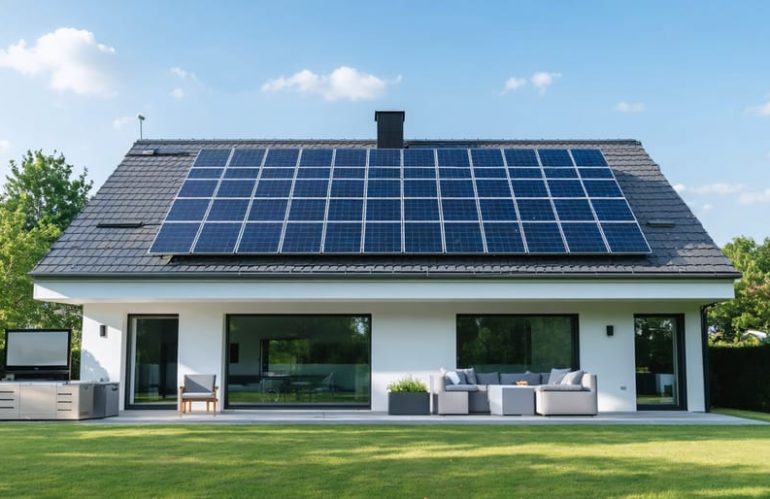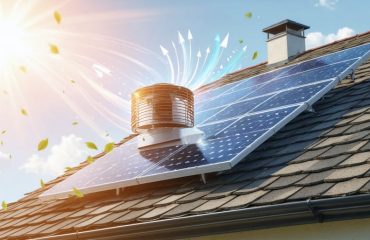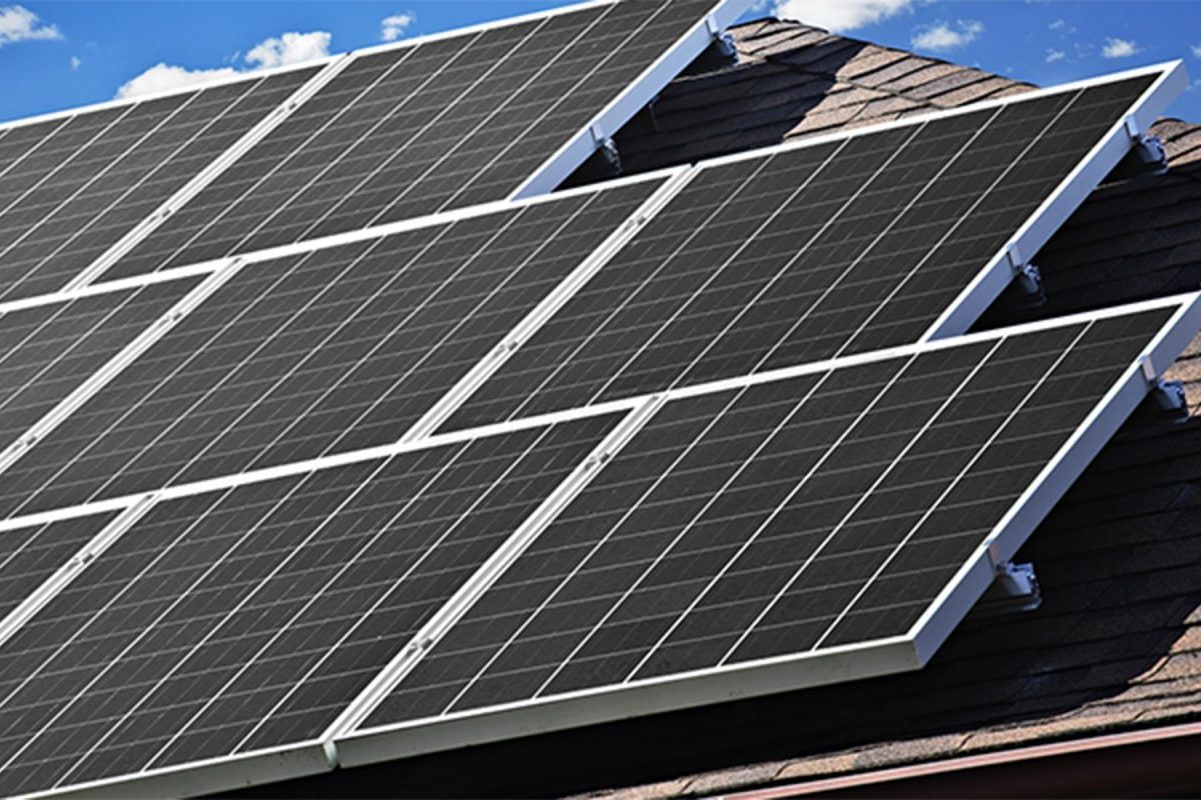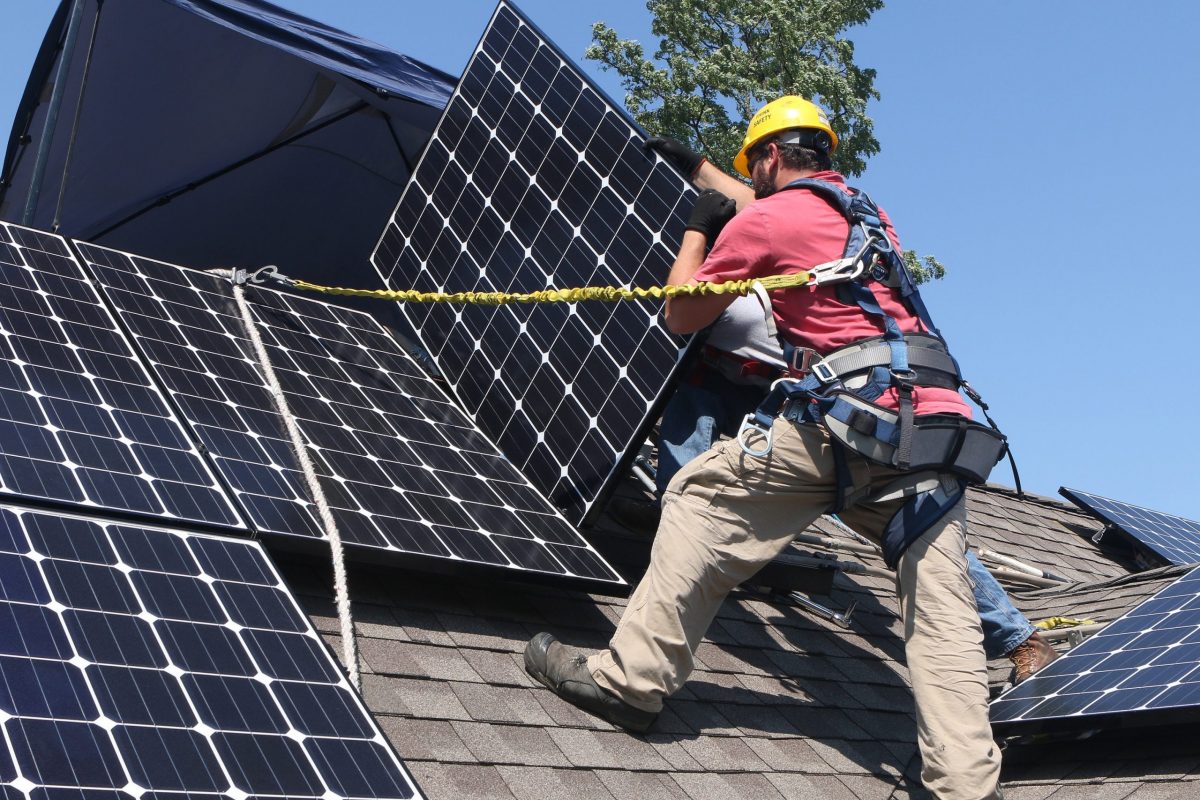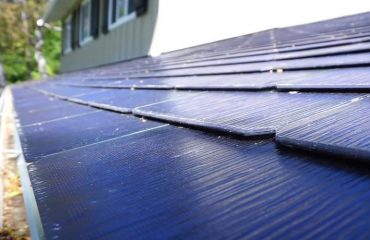Unlock complete energy independence with an 8kW off-grid solar system, the ideal power solution for average-sized homes consuming 800-1,200 kWh monthly. This robust setup, when properly configured, generates enough electricity to power essential appliances, HVAC systems, and modern conveniences while completely eliminating utility bills. By designing the perfect home solar system, homeowners can achieve true energy autonomy without compromising their lifestyle.
Modern 8kW systems combine high-efficiency solar panels, advanced battery storage, and smart inverter technology to deliver reliable power 24/7, regardless of weather conditions or grid status. With proper sizing and installation, these systems typically pay for themselves within 7-10 years while providing decades of clean, renewable energy. Whether you’re building a remote home or seeking independence from rising utility costs, an 8kW off-grid solution offers the perfect balance of power, performance, and long-term value.
Understanding 8kW Off-Grid Solar Systems
What Can an 8kW System Power?
An 8kW off-grid solar system can comfortably power a typical family home with moderate to high energy consumption. During peak sunlight hours, this system can run multiple major appliances simultaneously, including a refrigerator (150-400W), washing machine (500W), dryer (3000W), and dishwasher (1200-1500W). You can also power essential household items like LED lights throughout the house (10-15W each), several computers or laptops (50-100W each), TV (100W), and a microwave (1000W).
For climate control, the system can handle an energy-efficient air conditioner (1000-2000W) or several fans (50-100W each). In the kitchen, you can operate small appliances like a coffee maker (600-1200W), toaster (800W), and electric kettle (1200W) without concern.
When properly configured with adequate battery storage, this system ensures reliable power through the night and during cloudy days. However, it’s important to practice energy-conscious habits and consider using energy-efficient appliances to maximize your system’s capabilities. With smart power management, an 8kW system can support a comfortable, modern lifestyle while maintaining complete energy independence.

Essential Components
An 8kW off-grid solar system requires several key components working together seamlessly. Solar panels are the heart of the system, typically requiring 20-24 high-efficiency panels to achieve the 8kW capacity. These panels should be positioned optimally on your roof or ground mount to maximize sun exposure.
A robust inverter system is essential for converting the DC power from your panels into usable AC power for your home. For an 8kW setup, you’ll need either a single 8kW inverter or multiple smaller inverters totaling 8kW capacity. The system’s backbone consists of advanced battery storage solutions, typically lithium-ion batteries with a minimum capacity of 20kWh to ensure reliable power during nights and cloudy days.
Additional components include a charge controller to regulate battery charging, mounting hardware, and safety disconnects. A comprehensive monitoring system helps track your energy production and consumption, while proper wiring and conduit ensure safe power distribution throughout your home.
Cost and Investment Benefits
Initial Investment Breakdown
An 8kW off-grid solar system requires a significant upfront investment, but understanding the breakdown helps you plan your budget effectively. The total cost typically ranges from $25,000 to $35,000, depending on equipment quality and installation location.
The solar panels themselves account for roughly 30% of the total cost, ranging from $7,500 to $10,500 for high-quality panels. Battery storage, crucial for off-grid systems, represents another major expense at approximately 25% of the budget ($6,250-$8,750). Most homeowners opt for lithium-ion batteries due to their longevity and performance.
The inverter system, which converts DC power to AC power, typically costs between $3,000 and $4,000. Charge controllers, essential for managing battery charging, add another $800 to $1,200 to the total.
Installation labor usually accounts for 20% of the project cost ($5,000-$7,000), covering mounting hardware, wiring, and professional installation. Additional components like mounting racks, safety disconnects, and monitoring systems contribute the remaining costs.
Remember that prices can vary based on your location, chosen brands, and specific installation requirements. While the initial investment might seem substantial, many homeowners recover these costs through eliminated utility bills and various tax incentives or rebates available in their area.

Long-Term Financial Benefits
Investing in an 8kW off-grid solar system offers substantial long-term financial rewards that extend far beyond the initial setup costs. Most homeowners see complete return on investment within 5-7 years, after which the energy generated is essentially free. The average household can save between $1,500 and $2,500 annually on utility bills, depending on local energy rates and consumption patterns.
The federal solar tax credit currently allows homeowners to deduct 30% of the total system cost from their taxes, significantly reducing the initial investment. Many states offer additional incentives, including property tax exemptions and performance-based rewards, making the financial proposition even more attractive.
Independence from the grid means protection against rising energy costs and utility rate hikes. As electricity prices continue to climb at an average rate of 2-3% annually, your savings grow proportionally. Additionally, implementing smart solar upgrades can further optimize system performance and increase long-term savings.
Property value typically increases by 4-6% with an off-grid solar installation, making it a sound investment for future resale. Many homeowners also benefit from net metering programs where excess energy can be stored or credited, providing additional financial advantages throughout the system’s 25-30 year lifespan.
Installation and Space Requirements
Roof Space and Orientation
For an 8kW off-grid solar system, you’ll need approximately 400-500 square feet of unshaded roof space to accommodate the solar panels. This calculation assumes using standard 400-watt panels, which typically require about 20 panels for an 8kW setup. The exact space needed may vary depending on the specific panel efficiency and brand you choose.
Optimal panel orientation is crucial for maximum energy production. In the Northern Hemisphere, panels should face true south (not magnetic south) for best results. The ideal roof pitch angle ranges between 30-45 degrees, though panels can be mounted on most roof types using appropriate mounting systems and brackets to achieve the optimal angle.
Avoid placing panels in areas that receive shade from nearby trees, buildings, or other structures, particularly during peak sunlight hours (10 AM to 4 PM). Even partial shade on one panel can significantly reduce the entire system’s efficiency. If your roof space is limited or poorly oriented, ground-mounted systems offer an excellent alternative, providing easier maintenance access and optimal positioning flexibility.
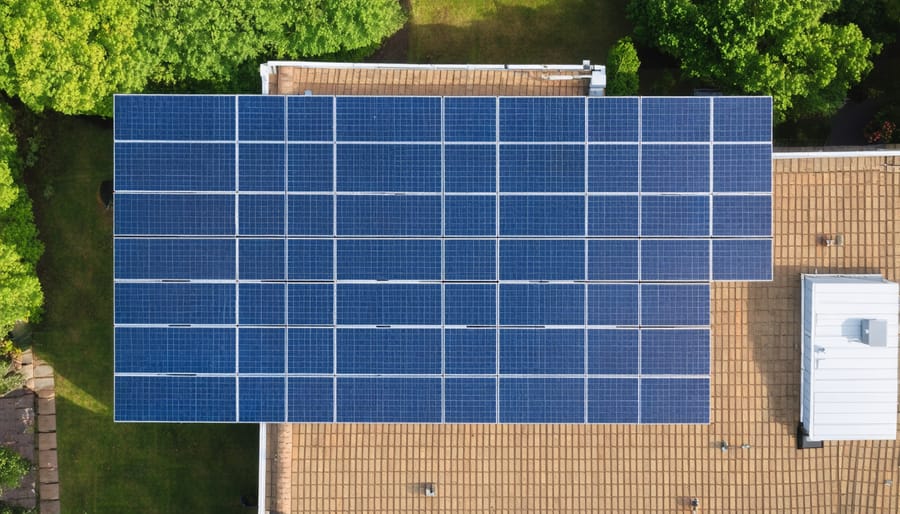
Battery Storage Location
Proper battery storage is crucial for the safety and efficiency of your 8kW off-grid solar system. Choose a well-ventilated, dry space that maintains a relatively stable temperature between 50-85°F (10-29°C). A garage, basement, or dedicated utility room works well, provided it’s protected from extreme temperatures and direct sunlight.
Your battery bank should be installed on a sturdy, level surface, preferably elevated slightly off the ground to prevent moisture contact. Ensure the area is clean, free from dust, and easily accessible for regular maintenance checks. If using flooded lead-acid batteries, proper ventilation becomes even more critical due to the potential release of hydrogen gas during charging.
Keep children and pets away from the battery storage area by installing appropriate barriers or locks. Place batteries at least 6 inches away from walls to allow for proper air circulation and heat dissipation. Consider installing a smoke detector and keeping a class C fire extinguisher nearby as additional safety measures.
Regular inspection of the battery area should include checking for proper ventilation, signs of corrosion, and ensuring all connections remain tight and clean.
Maintenance and System Longevity
Regular Maintenance Tasks
Regular maintenance is crucial to ensure your 8kW off-grid solar system operates efficiently for years to come. To optimize system performance, follow these essential maintenance tasks:
Monthly:
– Check and clean solar panels to remove dust, leaves, and debris
– Monitor battery water levels (for lead-acid batteries)
– Review system performance data
– Inspect all visible wiring connections
Quarterly:
– Test battery voltage levels
– Clean battery terminals and check for corrosion
– Verify inverter operation
– Inspect mounting hardware and structural supports
Annually:
– Schedule professional system inspection
– Test backup generator (if installed)
– Update monitoring software
– Evaluate system efficiency
Special attention should be paid to battery maintenance, as batteries are the heart of any off-grid system. Keep a maintenance log to track system performance and identify potential issues early. During winter months, ensure panels are clear of snow and ice. In summer, check that vegetation growth isn’t creating unwanted shade.
Remember to always follow safety protocols when performing maintenance. If you’re unsure about any maintenance task, consult with a qualified solar professional. Regular maintenance not only extends system life but also helps maintain optimal energy production throughout the year.
System Lifespan and Warranties
When investing in an 8kW off-grid solar system, you can expect impressive longevity from its components. Solar panels typically last 25-30 years, with manufacturers offering performance warranties that guarantee at least 80% power output after 25 years. Many premium panels even maintain 90% efficiency after this period.
Batteries, a crucial component of off-grid systems, vary in lifespan depending on the type. Lithium-ion batteries generally last 10-15 years with proper maintenance, while lead-acid batteries typically need replacement every 5-10 years. Most manufacturers provide 10-year warranties for lithium batteries and 3-5 years for lead-acid options.
Solar inverters, the system’s heart, usually come with 5-10 year warranties and can operate effectively for 10-15 years. Many manufacturers offer warranty extensions for additional peace of mind. Charge controllers typically last 10-15 years, with warranties ranging from 2-5 years.
The mounting hardware and wiring are built to withstand decades of outdoor exposure, often carrying 20-25 year warranties. Regular maintenance can significantly extend your system’s lifespan beyond these estimates. When properly installed and maintained, your 8kW off-grid solar system represents a long-term investment that provides reliable power generation for decades.
Is an 8kW System Right for Your Home?
Choosing the right solar system size is crucial for your off-grid success, and an 8kW system could be your ideal match if certain factors align with your needs. First, consider your average daily energy consumption – an 8kW system typically produces between 24-32 kWh per day, depending on your location and sun exposure. This output usually suits households that consume between 20-28 kWh daily.
Your available roof space or ground mounting area is another key consideration. An 8kW system requires approximately 500-600 square feet of unshaded space. The roof should also be in good condition and ideally face south in the Northern Hemisphere for maximum energy production.
Climate plays a significant role too. If you live in an area with frequent cloudy days or heavy snowfall, you might need additional panels or battery storage to maintain consistent power supply during less productive periods. Speaking of storage, an 8kW off-grid system typically requires a battery bank capacity of 30-40 kWh to ensure reliable power through the night and during bad weather.
Your budget is also a crucial factor. While an 8kW off-grid system represents a significant investment upfront, it can provide complete energy independence and long-term savings. Consider not just the initial costs but also the potential savings on utility bills and maintenance requirements over the system’s lifetime.
Before making your decision, it’s worth consulting with a solar professional who can assess your specific situation, including your energy needs, location, and property characteristics. They can help determine if an 8kW system is the right fit or if you might be better served by a different size setup.
An 8kW off-grid solar system represents a significant step toward energy independence and sustainable living. With proper planning and implementation, this system size can effectively power a typical household while eliminating dependence on the traditional power grid. By investing in quality components, working with certified installers, and maintaining your system regularly, you can enjoy reliable renewable energy for decades to come.
Before making your decision, carefully assess your energy needs, available roof space, and local climate conditions. Consider consulting with multiple solar providers to get detailed quotes and system designs. Don’t forget to research available tax incentives and financing options, as these can significantly reduce your initial investment.
Remember that while the upfront costs may seem substantial, an off-grid solar system offers long-term financial benefits through eliminated utility bills and increased property value. With renewable energy technology continuing to advance and battery storage becoming more efficient, there’s never been a better time to embrace solar power and take control of your energy future.
Ready to take the next step? Schedule a professional site assessment to determine if an 8kW off-grid system is right for your home.

